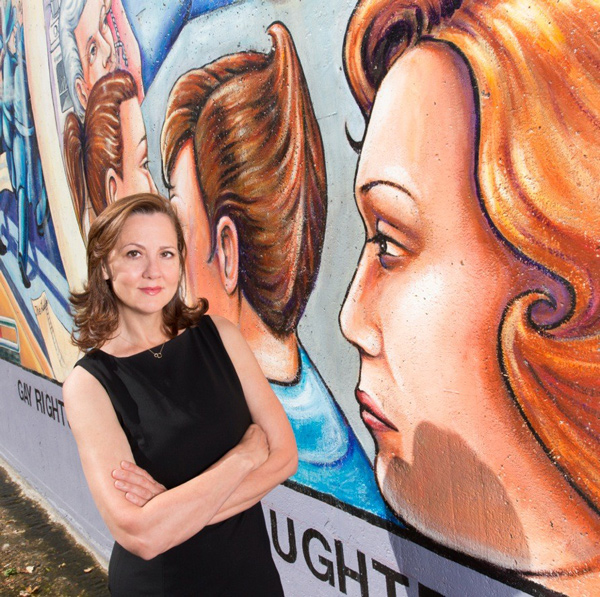Danielle Brazell is the general manager of the Los Angeles Department of Cultural Affairs, appointed by Mayor Eric Garcetti in 2014. Today the DCA has a budget of $42 million with 64 fulltime staff, a municipal art gallery (LAMAG) and 18 community art centers. Through an application process, they award the annual COLA grant to artists.
You’ve done so many things, and what’s great is that you’ve been working on the ground. You were at Highways…
Highways was really the epicenter of the multicultural arts movement of the 1990s. Highways Performance Space and 18th Street Arts Center are such important organizations for emerging artists, teaching artists and arts administrators.
How did you discover the place?
A friend of mine was doing an art show at the gallery inside Highways. He had been documenting the protests happening around the AIDS epidemic. When I walked in, I thought, “This place is powerful.” Tim Miller [one of the founders] was giving a free performance workshop. I mustered up the courage to show up and start taking his workshops. [They were featuring] major contemporary artists that were addressing critical issues facing our time, and they were doing it in really interesting, experimental, and contemporary ways. They were also highly confrontational about it. It was this wonderful place where artists were interested in art as a civic dialogue.
What you’re saying seems post-view and pre-view at the same time. I think this kind of civic engagement is going to be important again, with what’s happening.
I think it’s essential. This is the work of artists and creatives, arts administrators and curators, this is what we provide to society. We need to make sure we can reflect a mirror to ourselves, and to challenge our social institutions—government, religion, military, education—this is what we do. In doing so, we offer something extraordinary. We build community cohesion, we promote independent thinking, we build meaning into people’s lives—in many ways, we provide perspective on what’s happening in the world.
Eventually we graduated, and we began to teach our own women’s workshops. We were interested in cultivating other women’s voices, and also further expanding our own voices. In order to do that, you have to develop an economy around it.
Were these workshops all done at Highways?
At Highways, at Beyond Baroque—I did a couple residencies at Cal State LA, and we did some workshops at the Gay and Lesbian Center. The Department of Cultural Affairs has an Artist-in-Residence program, and I applied and was an artist-in-residence.
What made you think that an arts career was for you?
I think when I was a kid I wanted to do something that had relevance and meaning. For me, being able to have an art career in and of itself is kind of amazing. There was a lot of violence in my neighborhood, a lot of instability, a lot of trauma. I got lucky and I had a teacher, a drama teacher [at Cleveland High School], who said this is a safe place for you, where you can learn to move your trauma into something creative. I began to find community in that theater department, and to really learn how to read and write—at the time I was a functioning illiterate.
Tell me about the COLA (City of Los Angeles) grant program—it’s very unusual for a city to give grants directly to artists to advance their career.
It’s such an important stepping stone for emerging and mid-career artists to receive acknowledgement and support from their city. These are for visual arts, literary arts, and design, and we like to give out 15 grants a year but sometimes it’s less. The 20th anniversary is going to be an important moment, because we’re going to be doing an exhibition highlighting the past fellows and the impact the award had on their careers.
Will that be at the LA Municipal Art Gallery?
Yes. The energy at the Municipal Art Gallery at the moment is just so exciting; we’re thrilled to have Isabelle [Lutterodt, the director] and her team on board. It’s a 10,000 square foot gallery, it’s a beautiful space, and [this fall] we’re doing our Getty PST show, “Learning from Latin America,” there, a survey show on modernism from a Latin American perspective.
We have to think about how are we of service and who are we in service to? We are in service of the people of Los Angeles. We operate basically out of public money that’s funded through tourist dollars, but we are stewards of these dollars. We need to make really thoughtful investments on how we move arts and cultural services out in the community. And we can’t do that without artists—artists and arts organizations are our key partners in achieving our goals.



















0 Comments